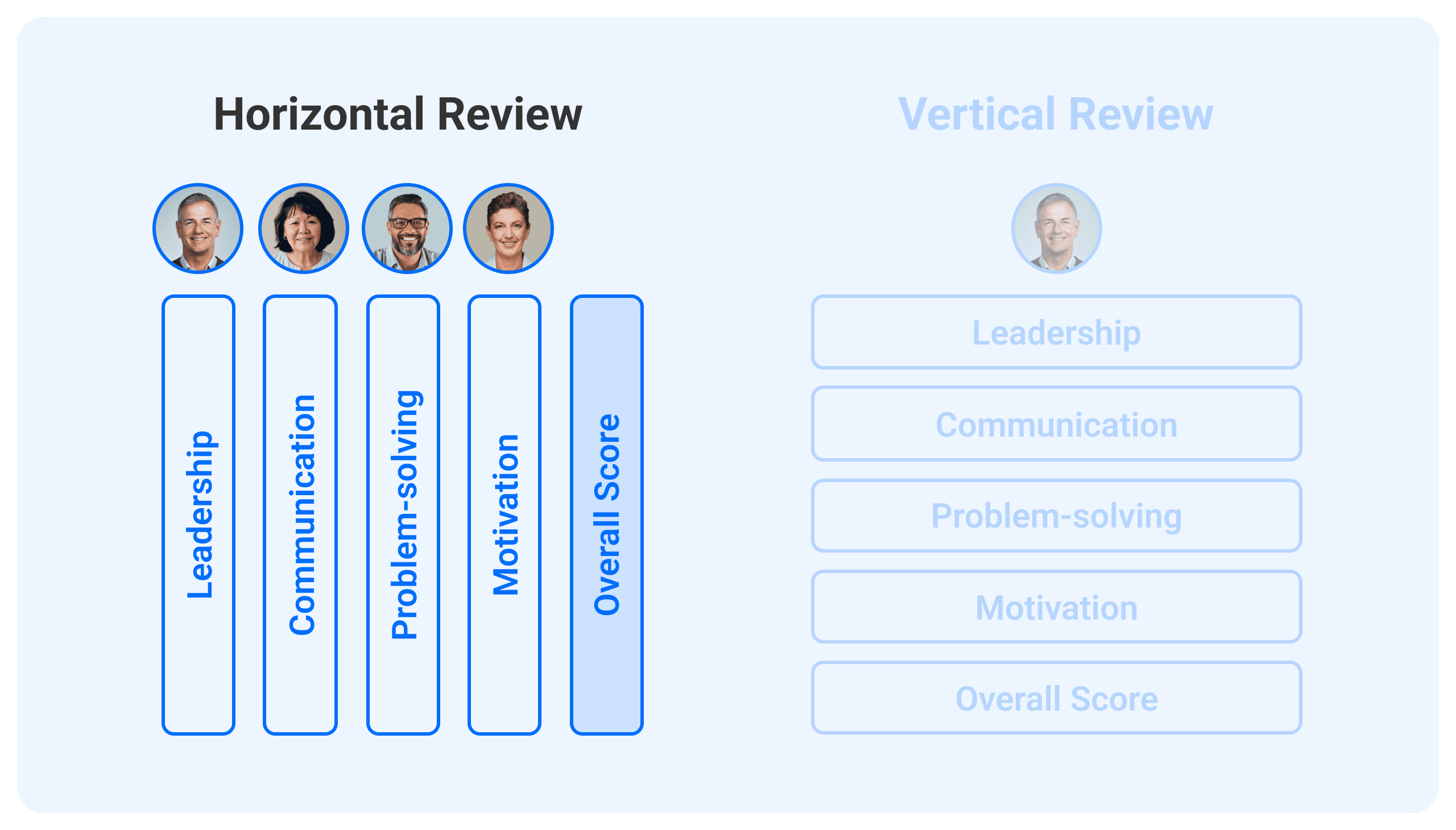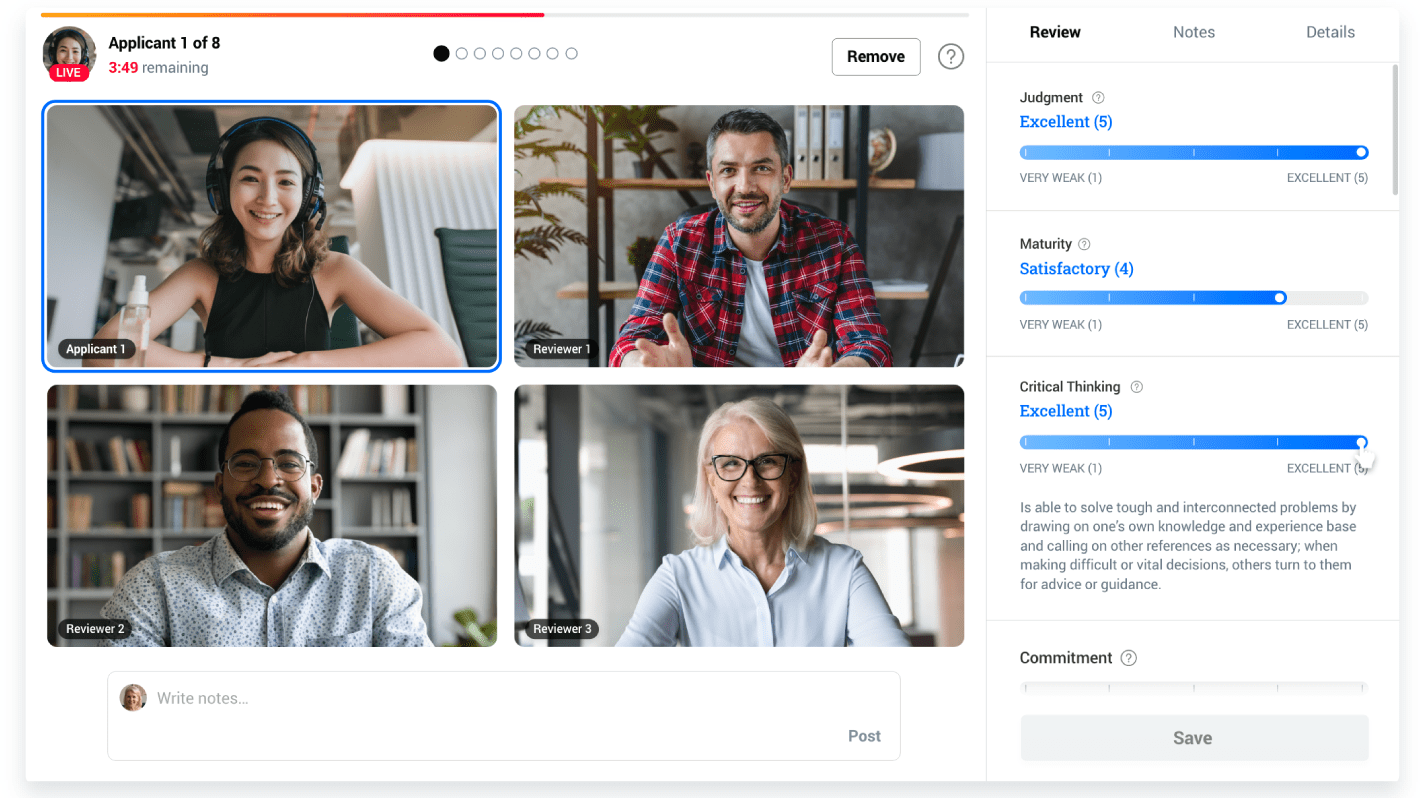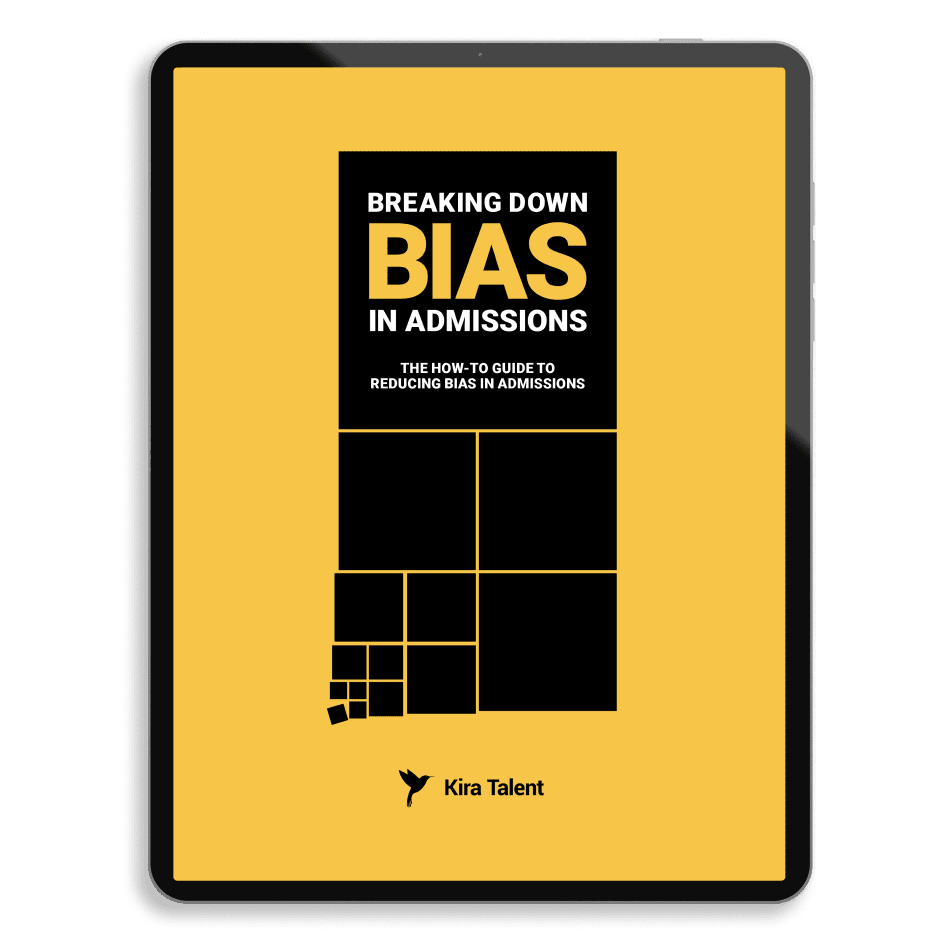Navigating the complex landscape of college admissions requires careful consideration of how candidates are evaluated. The admissions process is the first step in a student's journey to higher education, making it crucial for institutions to adopt methods that are both fair and effective. Two primary methods commonly used in this evaluation are horizontal and vertical review.
In this post, we will dive deeper into these two reviewing methods, examining their principles, processes, and outcomes. By understanding the intricacies of each approach, admissions teams will be better equipped to determine which method aligns best with their institutional goals and values, ultimately leading to more informed and effective admissions decisions.
Learn more about:
Understanding Horizontal Review
Selecting the right approach for your program
Understanding Horizontal Review
Horizontal review is an innovative technique inspired by the Multiple Mini Interview (MMI) model. Most commonly used in the health sciences field, MMIs consist of several short, structured interview stations, each assessing a different skill or attribute, such as communication or problem-solving.
Similarly, horizontal review in Kira Talent involves multiple reviewers, each focusing on a different aspect of the applicant's profile.

The goal of horizontal review is to provide a more comprehensive and well-rounded evaluation of an applicant. By breaking down the evaluation process into smaller, specialized components, admissions teams can gain a deeper understanding of an applicant's strengths and weaknesses.
Advantages of Horizontal Review:
- Mitigates the impact of bias by spreading evaluations across multiple reviewers
- Improves the reliability of scores through focused expertise
- Provides granular insight into specific applicant skills
Challenges of Horizontal Review:
- Requires a more complex logistical setup
- Reviewers only see one piece of an applicant’s full assessment
A key advantage of horizontal review is its capacity to minimize bias in the admissions process. By involving multiple reviewers for each candidate, this approach offers a broader spectrum of perspectives, mitigating the influence of any single interviewer's personal preferences or unconscious biases. Additionally, horizontal review reduces the risk of process-based biases, such as the 'halo effect’, from affecting overall evaluations.
Horizontal review also improves score reliability by enabling reviewers to specialize in assessing a single competency. By evaluating this competency across many applicants, reviewers develop a clearer understanding of what distinguishes a 'good' response from an 'excellent' one.
However, horizontal review limits individual reviewers from understanding the full picture of an applicant, as each reviewer sees only one piece of their assessment. The process also requires a more intricate logistical setup for the admissions team, making it important to have the right tools and training in place.
Understanding Vertical Review
Vertical review represents a more traditional approach in the admissions process, where committees evaluate each candidate’s full application as a cohesive whole, rather than in separate components.

This comprehensive method allows reviewers to consider multiple aspects of a candidate simultaneously, such as academic achievements, extracurricular activities, personal statements, and letters of recommendation, providing a holistic view that ensures a well-rounded assessment.
Advantages of Vertical Review:
- Provides a holistic view of each candidate, useful for understanding overall fit
- A tried and true process, making it easier to implement with fewer resources
Challenges of Vertical Review:
- More susceptible to the effects of admissions bias
Vertical review offers several benefits, primarily by providing a “full picture” evaluation of each applicant, which helps in assessing their overall potential and fit within a school or program. Vertical review is a tried and true process for most admissions teams, making it more accessible and straightforward to implement.
However, a vertical review process is more susceptible to biases, as individual reviewers can significantly sway an applicant's chances, with initial impressions often having an outsized impact on the final evaluation.
Selecting the right approach for your program
Choosing between horizontal and vertical review depends largely on your institution’s goals, resources, and the specific characteristics you wish to assess in applicants.
When to Choose Horizontal Review:
- If reducing bias is a priority for your admissions team
- When you want a more detailed analysis of specific competencies important to your program
When to Choose Vertical Review:
- If you seek a broad, holistic understanding of your applicants
- When you need a straightforward approach that can be implemented quickly and efficiently
Horizontal and vertical reviews each offer unique advantages and challenges. There is no ‘right answer’ and which review will work best for your program will depend on your needs and goals.
If you're uncertain about the best strategy for you, Kira is here to help. Book a demo through the link below, and one of our team members will demonstrate how each reviewing method complements your unique program.



